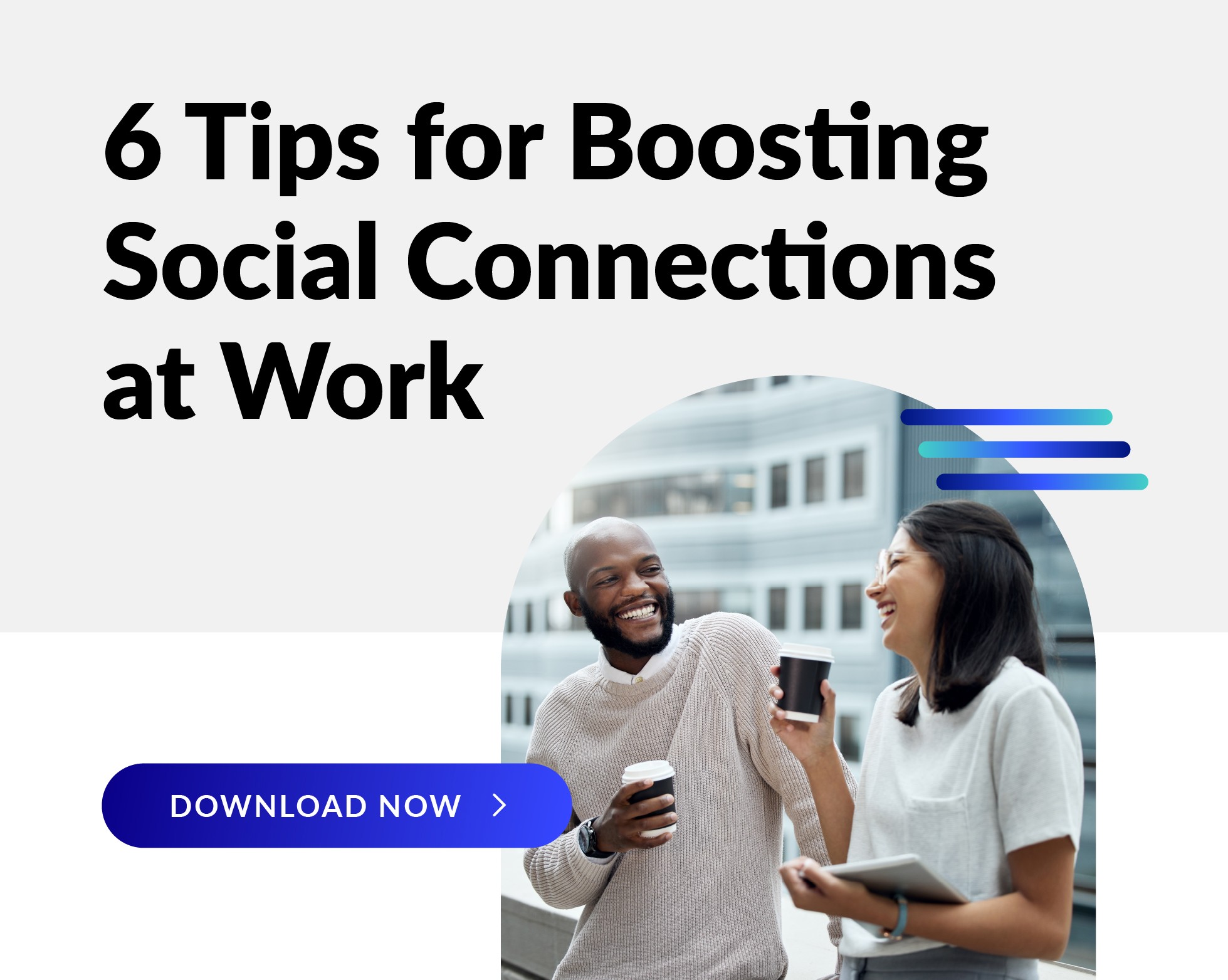 Our latest well-being webinar focused on how we can move from talking about mental health in the workplace to actually doing something about it. We heard from our partners at meQuilibrium and Wellbeats, as well as one of our own WebMD Health Coaches, about how we can all learn tools and techniques to increase resilience, manage stress and ward off burnout. If you missed it, this week’s blog has all the details.
Our latest well-being webinar focused on how we can move from talking about mental health in the workplace to actually doing something about it. We heard from our partners at meQuilibrium and Wellbeats, as well as one of our own WebMD Health Coaches, about how we can all learn tools and techniques to increase resilience, manage stress and ward off burnout. If you missed it, this week’s blog has all the details.
The mental health landscape.
Workforces are grappling with a lot these days. Alanna Fincke, Executive Director of Content and Learning with meQuilibrium, our WebMD ONE resilience partner, remarked that as a society we’ve experienced an unprecedented level of change and turmoil—the disruption and death caused by the pandemic, a transformed workplace, increased violence, inflation, global conflict and more. So it’s no surprise that burnout is on the rise, stress is at an all-time high and we are also suffering from a loneliness epidemic. And, nearly 1 in 4 employees say their job is the number one stressor in their lives.1
Alanna shared, “We keep saying that we will take care of ourselves when the dust settles. But it seems the dust isn’t ever settling, so we do need to take steps now to deal with stress before it reaches burnout levels.” This is particularly important for managers, she noted, who have not only had to manage their own stress but also the stress of those who report to them.
Amy Fink, Senior Lifestyle Coach with WebMD, shared that the coaching staff is seeing a huge uptick in calls from members seeking help with anxiety and depression. So many, in fact, that WebMD added a Clinical Behavioral Health Team, which offers mental health and lifestyle stress coaching. Amy also reminded us that in the last three years, 1.5 million more deaths have occurred in the U.S. than what normally occurs. So, even though we are out of the acute phase of the pandemic, many people continue to grapple with grief and loss; on some level, it is always humming there in the background and affects our performance, even though we may not be consciously aware of it.
The good news is we’ve come a long way in the past several years when it comes to talking about mental health in the workplace. But, as our experts shared with us, the time has come to shift the conversation from awareness to action. Here are their tips for creating a mentally healthy environment that empowers the workforce to take charge of their emotional and physical health.
Create resilience on your teams.
Resilience is a tool that anyone can build that helps us thrive in both our personal and professional lives. Resilience has a protective effect around burnout and helps us to manage the anxiety we feel about what could or might happen. Alanna shared a meQuilibrium core technique called “Trap It, Map It, Zap It,” which can help us reframe negative thoughts.
- Trap it: Often, we feel an emotion in our body before we even know we’re thinking it. Consider how sadness feels “heavy,” anxiety feels “tight” and anger feels “hot”—this is our body’s early detection system at work. She taught us how to pause and check in with how our body feels to, in essence, “trap” the emotion.
- Map it: Every emotion is driven by a thought, but often our thinking is inaccurate. For example, we can fall into the trap of personalizing things, such as feeling that a mistake is “all my fault” and “I’m a failure.” Mapping our emotion to the exact thought causing the emotion is thus a helpful technique.
- Zap it: This portion of the technique asks the individual to check the accuracy of the thought and reframe it. For example say, “This was a team project and we all played a part in the mistake” in order to rewrite that thought.
Stress to teams that self-care isn’t selfish.
Each of our experts noted that we need to change the stereotype of self-care. Self-care is often thought of as a luxury or a treat—something we “gift” ourselves, like a massage or a bubble bath, when we’ve gotten to the end of our “to-do” list.
But in reality, self-care should be thought of as the small acts we do every day to keep our tanks full. It’s helpful to think of it like a car—if we don’t keep filling the tank, at some point the car won’t run. To take the analogy a step further, on a road trip we think nothing of pulling off the highway to refuel. This is the same approach we should take with our energy.
Bria Gali, VP Growth, Partners & Consultant Relations with Wellbeats shared the small, daily acts we should be engaging in to keep our tanks full:
- Take regular breaks. Stretch, go for a quick walk, or interact with pets or family members. Rather than taking time away from work, these acts can increase our focus and productivity.
- Get outside. Research shows that spending time in nature—even just a few minutes—can boost our mood.
- Move daily. We’ve long known the connection between exercise and physical health. Now, research is showing the connection to mental health, too. Bria shared Duke University/Mayo Clinic research which found that just 10 days of exercise per month has the equivalent effect of taking an antidepressant. And, exercise doesn’t need to last an hour—short bursts of physical activity—10 minutes at a time—can do wonders for keeping our tanks full.
- Use food as fuel. We know that food has the power to literally change our mood, so eating less processed food and lots of fruits and vegetables, whole grains, and lean sources of protein is a form of self-care.
- Be mindful. A few minutes of meditation at the start of the day or even in the middle of a hectic day can help our brains settle and cope with stress.
- Keep up the consistency. Amy from our coaching staff shared that it’s ok to scale back on our goals from time to time. For example, if we set a goal to work out five days a week and we hit a busy patch, it can be tempting to throw in the towel completely. It’s better to temporarily revise that goal down to three days to keep the consistency of caring for ourselves, then ramp back up when things slow down.
Finally, one of the keys to making self-care a part of our work day is the willingness of leaders and managers to model this behavior themselves. Encourage leaders in your organization to share what they do to keep their own tanks full. For me, I make sure I get some form of exercise in every morning – a good long walk, working out in my basement with weights, or simply running around with my two dogs outside. It helps me start the day!
Set your team up for success.
It’s unfortunate, but true: human beings are wired to feel anxiety, stress, and frustration more easily than happiness. This tendency served us well when we were protecting ourselves from saber-toothed tigers, but no longer applies in the modern world. So, what can we do to combat the negativity we often default to and tip into positivity and gratitude?
One technique Alanna shared is to reflect on the previous week’s wins each Monday during a team meeting. The “win” doesn’t have to be something big, but just hearing about a good meeting, a sale, or the chance to help a co-worker has the power to release dopamine, the feel-good chemical in our brains. And doing this repeatedly helps to retrain our brains to focus on the positive.
Bria from Wellbeats also shared how important it is to keep teams connected to their purpose. Managers can help by continually setting expectations with employees and reminding them of how their jobs contribute to the overall purpose of the organization. Giving employees opportunities to be mentored and using regular feedback channels so they feel they are listened to can also help people feel more connected and engaged.
Acknowledge loneliness and take steps to combat it in the workplace. The U.S. Surgeon General recently shared insight about the “loneliness epidemic” we are facing and how a lack of regular social connections is the equivalent of smoking 15 cigarettes per day when it comes to our risk for premature death.
Workplaces can play a role in combatting loneliness. This is especially important given the prevalence of remote or hybrid work. Here are a few of our experts’ ideas to create connections on teams:
- Purposeful in-person time. If you’re asking employees to come into the office, make sure their time there is valuable by maximizing in-person meetings and get-togethers. No one wants to spend the day on Zoom after a long commute when they could have easily accomplished this at home.
- Walk and talks. Urge teams to take meetings outside when it’s possible. They’ll get a double dose of movement and the positive effects of being outdoors.
- Wellness challenges. These activities bring the whole organization together in the pursuit of well-being. And they don’t have to be physical—gratitude challenges are becoming increasingly popular.
- Working out with co-workers either remotely or in person. Wellbeats offers the ability to invite coworkers to join classes together.
- Virtual or in-person coffee chats where employees get randomly matched with another person they may never have had the chance to interact with.
Our three experts—Alanna, Bria and Amy—shared so many great tips for helping our workforces combat stress and burnout. Since we can’t list them all here, we encourage you to listen to the webinar to hear all their great ideas. If you’d like help supporting your employees with the tools and resources to care for their mental and physical health, contact us at connect@webmd.net.




